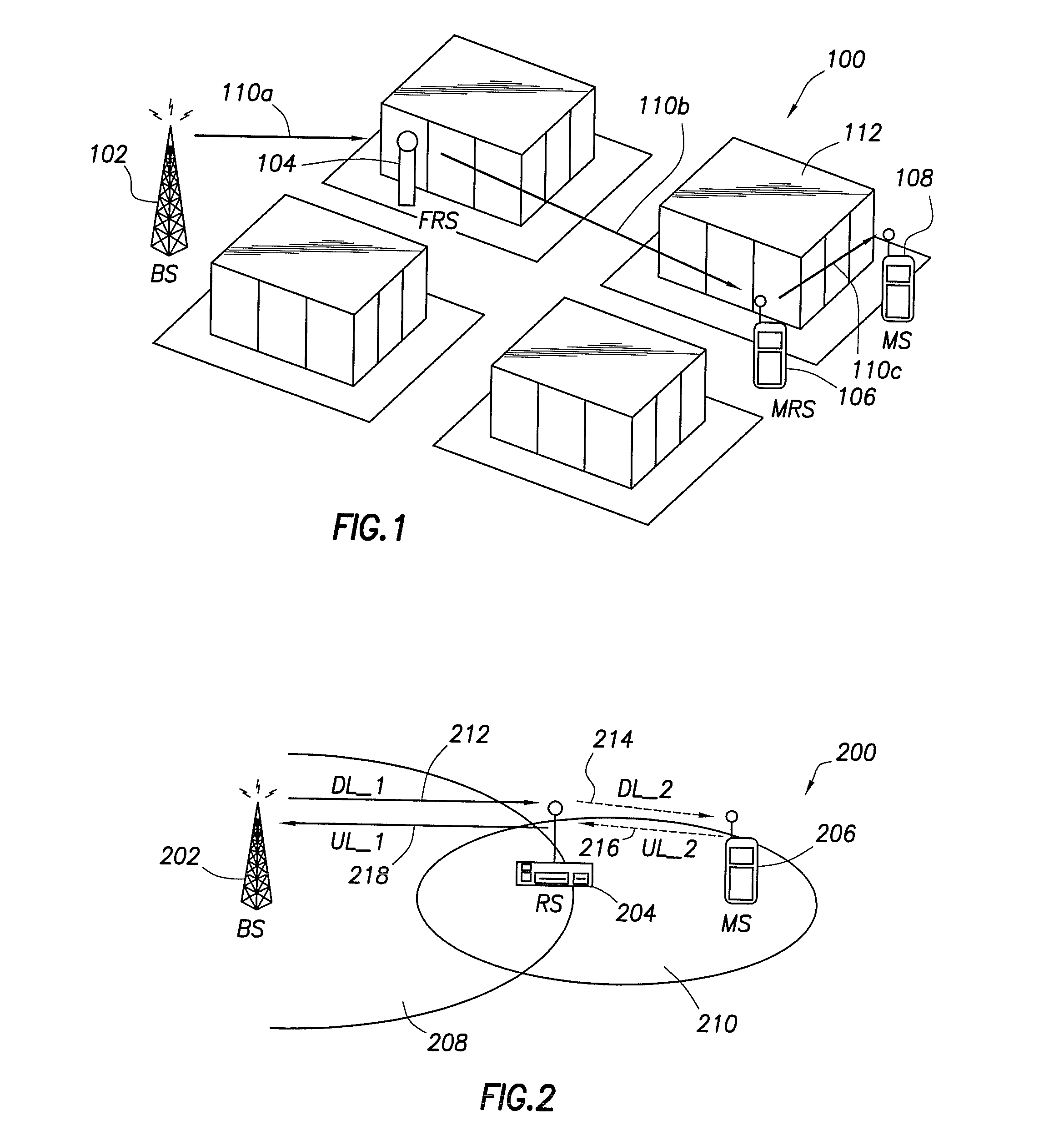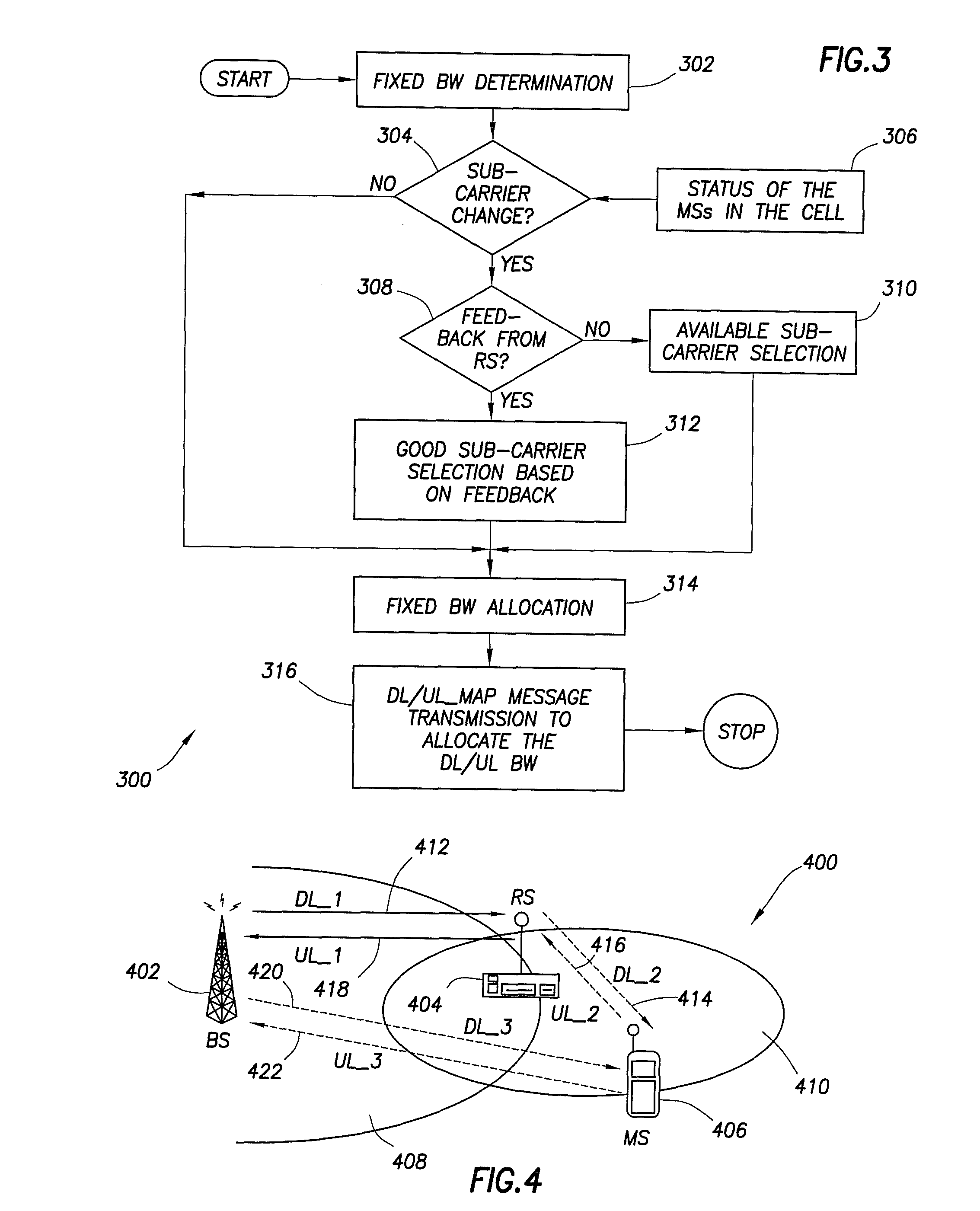Channel configuration and bandwidth allocation in multi-hop cellular communication networks
a multi-hop cellular communication and channel configuration technology, applied in the field of telecommunications, can solve the problems of limited coverage and known limitations of single-hop cellular networks
- Summary
- Abstract
- Description
- Claims
- Application Information
AI Technical Summary
Benefits of technology
Problems solved by technology
Method used
Image
Examples
Embodiment Construction
[0019] With reference now to the figures,FIG. 1 is a simplified block diagram 100, which illustrates coverage in a multi-hop cellular network, in accordance with an example embodiment of the present invention. For this illustrative example, diagram 100 depicts a portion of a multi-hop cellular network, which includes a BS 102, a fixed relay station (FRS) 104, a mobile relay station (MRS) 106, and an MS 108. For example, the multi-hop cellular network depicted in FIG. 1 may be implemented in accordance with IEEE Standard 802.16-2004. BS 102 is shown communicating with MS 108 on a downlink via three link segments 110a through 110c (e.g., multiple links or multi-hops). For example, link segment 110a may be implemented with a wireline connection between BS 102 and FRS 104, and link segments 110b and 110c may be implemented as wireless connections between FRS 104 and MRS 106, and MRS 106 and MS 108, respectively. Note that the multi-hop, indirect routing of signals from BS 102 to MS 108 ...
PUM
 Login to View More
Login to View More Abstract
Description
Claims
Application Information
 Login to View More
Login to View More - R&D
- Intellectual Property
- Life Sciences
- Materials
- Tech Scout
- Unparalleled Data Quality
- Higher Quality Content
- 60% Fewer Hallucinations
Browse by: Latest US Patents, China's latest patents, Technical Efficacy Thesaurus, Application Domain, Technology Topic, Popular Technical Reports.
© 2025 PatSnap. All rights reserved.Legal|Privacy policy|Modern Slavery Act Transparency Statement|Sitemap|About US| Contact US: help@patsnap.com



